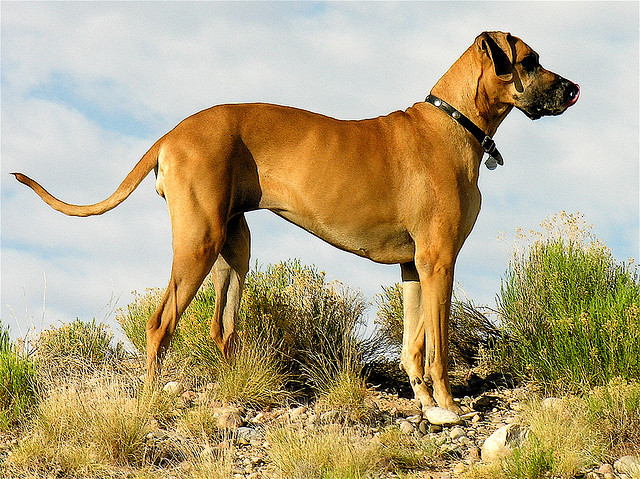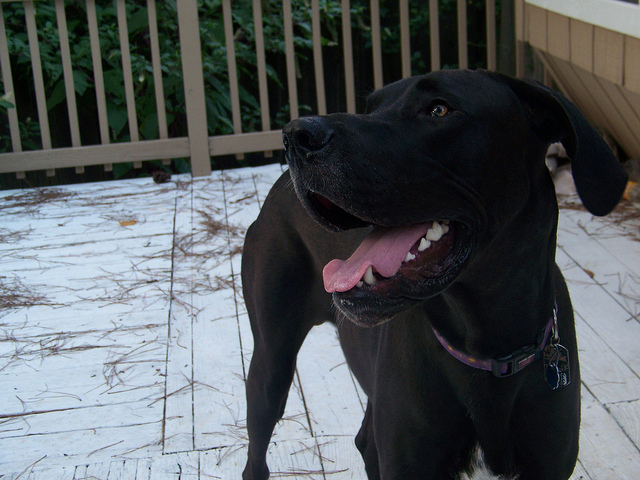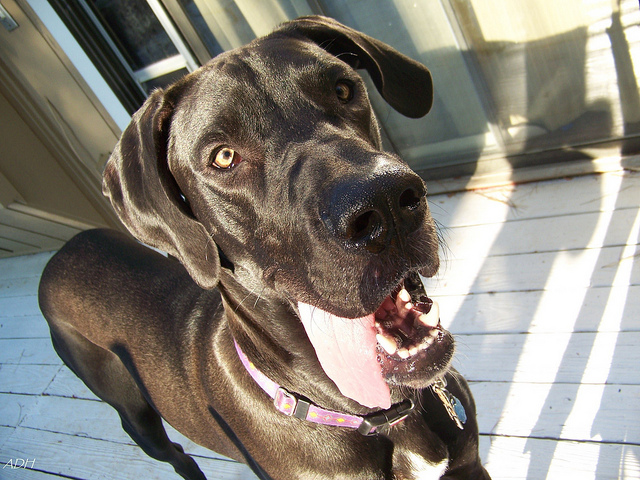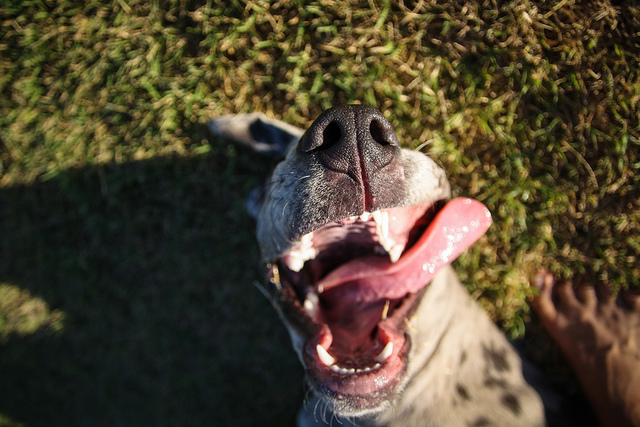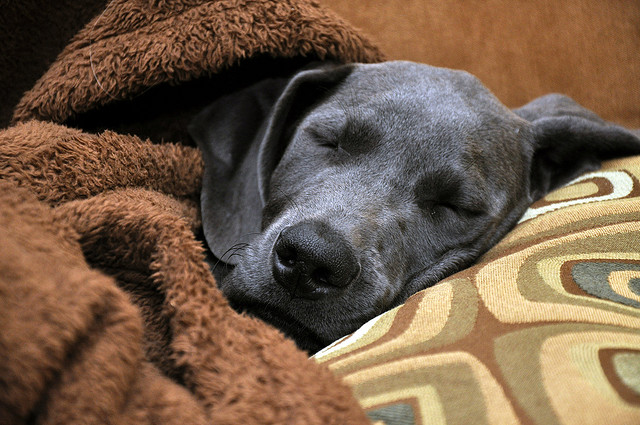Through the years, the Great Dane has been called many different names, including the Danish Dog, the Ulmer Mastiff, the Dogue Allemand, the Deutsche Dogge, the Tiger Mastiff, the Brosse Dogge, the Kammerhunde and many more. This enormous breed of dog is very distinctive, bringing gentleness, stamina, beauty, speed and nobility along with his huge size. Great Danes are known for their reliable and gentle disposition and are part of the Working Group of dogs recognized by the AKC.
Origin
No one is quite sure how long the Great Dane breed has been around, but it’s thought that the breed’s ancestors probably trace back thousands of years. Drawings that were found on Egyptian monuments dating back thousands of years greatly resemble this breed. In Chinese literature that dates back to 1121 B.C., descriptions were found of dogs very similar to the Great Dane. We do know that the Great Dane has been bread selectively for a minimum of 400 years, and it’s thought that the breed traces back to crosses between Irish Wolfhounds and the English Mastiff.
In Germany, Great Danes were bred for hunting European wild boar, which was considered the most savage game in Europe. It required an intelligent, tenacious, powerful dog to hunt wild board, and this breed was perfectly suited for this task. After the dogs were bred for hunting, they impressed German nobility and soon were used as guard dogs and companions for their huge estates. It wasn’t until the 1800s that the breed began to come close to the dogs we’re familiar with today. In 1876, this breed was declared to be Germany’s National Dog, and soon the breed was referred to as the Deutsche dogge in Germany. Later, in 1891, the formation of the Deutsche Dogge Club of Germany took place and an official standard that described this breed was adopted.
It wasn’t until the middle of the 1800s that Great Danes were brought to the United States. Apparently “Buffalo Bill” was a big admirer of the Great Dane and brought some over. It wasn’t until 1887 that the AKC would recognize this breed. In 1889 , the German Mastiff Club of America was first started, although it would later become the Great Dane Club of America.
Appearance
The Great Dane is muscular, elegant and large. While they are huge, they should have a square proportion, which means that the height should match the length of their body. The breed has a rectangular head and medium size, high-set ears that often are cropped. Their tail is very long, tapering to a point and it should not be cropped.
Great Danes have a short haired coat that may be harlequin, blue, fawn, mantle, black or brindle. A harlequin coat has a white base with black patches of irregular size all over the body. A blue coat is actually a slate gray, fawn coats are gold and the dog has a black mask, while the mantle coat includes black and white with a black blanket of solid color on the body. Brindle coats are a mixture of black and fawn in a pattern that looks like a tiger stripe.
The male Great Dane should be at least 32 inches at his shoulder, and the females should be at least 30 inches tall. Males that are less than 30 inches are disqualified as show dogs, and females are disqualified if they are under 28 inches tall. Usually males weigh between 135 and 150 pounds while the females may weigh between 120 and 135 pounds.
Temperament
Although the Great Dane was originally bred to be powerful and fierce when hunting wild boar, today these dogs are bred for their beauty, size, and endurance. They should be dependable and friendly, and should never be timid. Even though they were originally developed to be a working breed, well-bred Great Danes make loving, trusted, affectionate pets, although they should be kept by families that have a lot of space.
Since the Great Dane is so energetic, especially as an adolescent, they should be adopted by families that have plenty of time and space. They like to gallop, jump and leap. Since they are so playful and very large, they shouldn’t be left with small children without supervision. Once these dogs become adults, they don’t require a huge amount of exercise. It is best to take them on walks, since jogging can be damaging to their joints and bones, particularly in their first couple years of life.
Usually Great Danes are easy to train and housebreak. They learn basic obedience commands quickly and have a desire to please their owners.
Grooming
Even though a Great Dane has a very short coat, these dogs still shed a lot. Brushing their coat each week using a firm bristle brush helps to keep any flyaways under control. In many cases, owners decide to use a professional groomer to deal with regular grooming tasks, such as nail trimmings and baths. Since this breed is so large, bathing a Great Dane can be a difficult task, which is often best left to a professional.
Working roles
Although Great Danes are considered working dogs and were bred to work, most Great Danes do not work today. They have become wonderful pets, and one dog was actually enlisted as a morale booster in the Royal Navy back in World War II.
Health
Generally, Great Danes live to be between 7 and 10 years old. Like other giant dogs, they usually have a slow metabolism, which means they don’t have as much energy as some other breeds. They also display some health problems that often occur in large breed dogs, such as bloat. Hip dysplasia is a common problem among these large dogs as well. The Great Dane often deals with congenital heart diseases, and dilated cardiomyopathy is common, which has resulted in a nickname for the breed – the Heartbreak breed. Since they are so large, they can develop “wobbler’s disease,” which is a disease that may affect the vertebral column. The breed grow very fast, which can cause the vertebrae bones to push against the dog’s spinal cord, which can result in some leg weakness. While it often straightens out on its own, it can require surgery in some cases. Other health problems that may affect a Great Dane include:
- Lymphoma
- Callus Dermatitis
- Congenital deafness
- Congenital idiopathic megaoesophagus
- Ectropion
- Entropion


